Harmonic Intervals on the Piano Staff
Home » Piano Notes » Harmonic Intervals on the Piano Staff
Until now we played separated notes written on the musical staff.
The intervals between these notes create a certain MELODY.
That's why they're called MELODIC INTERVALS.
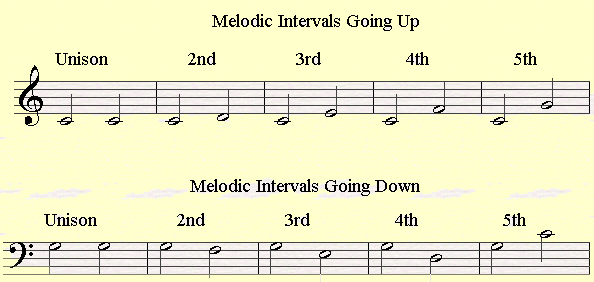
A melody is a tune basically. It's a succession of melodic intervals arranged in a certain musical shape that makes sense to us.

The melody is the most dominant element in a composition.
Until today we used to play the melody with both hands while moving from the upper piano staff to the lower piano staff.
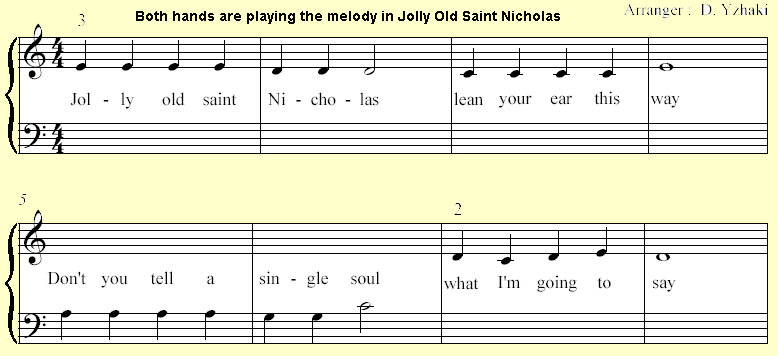
In today's piano lesson the melody will be played with the right hand, written on the upper piano staff. Locating the melody in the higher register of the piano makes it sound more expressive.
What are we going to do with the left hand then? We'll play the harmony!
When notes are played together they make HARMONY.
As opposed to melodic intervals played separately, HARMONIC INTERVALS are played together.
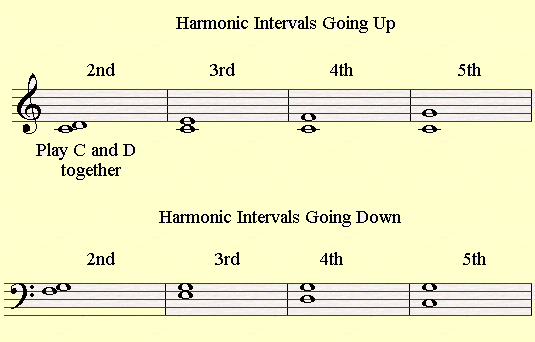
The harmony is a type of accompaniment. This combination of the harmonic intervals with the melody, produces chords (You must have at least three notes in a chord).
The middle register is ideal for the harmony, and therefore, the left hand will be playing the harmony part at the moment, written on the lower piano staff.
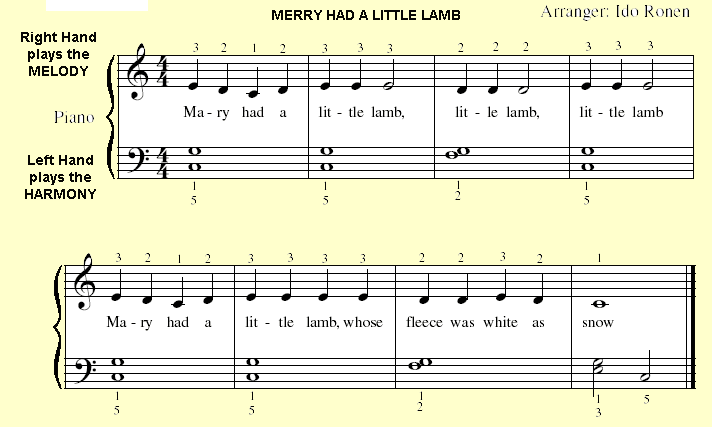
Before we go on there's another important element in music I'd like us to discuss - the BASS.
The bass is the lowest part in a musical composition. The bass tells us the name of the chord and later on we'll learn
that you can tell how a chord functions in a chord progression according to the bass note of the chord.
Being the lowest part in a composition, the bass naturally goes to the lowest piano staff so it is played with the left hand.
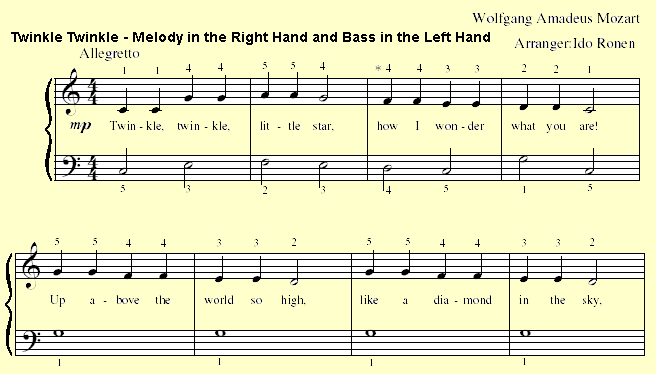
Later on, in our piano course we'll learn about scales, and from that point on we'll learn to realize the logic behind different scale degrees.
Now, you might wonder how it is possible to play the melody, the harmony and the bass when all we have is two hands. How to combine all three elements?
Well, think of it... If you play two notes at the same time, a melody note in the right hand and a bass note in the left hand you're already creating harmony (It only takes two notes to create an harmonic interval).
let's say that instead of playing one note in the left hand we'll be playing the bass and an extra note. We then have an harmonic interval of two notes in the left and the melody in the right hand. You get three elements played with two hands. The example above of the song Merry had a little lamb shows how it's done nicely.
How to Practice Notes Reading When Both Piano Staffs Are Notated at the Same Time?
When we try to read piano notes on both the treble piano staff and the bass staff there's a lot of information we need to process at the one time.
The best way to practice reading notes on the piano staff is to FIRST READ AND PLAY EACH HAND APPART.
It's just like a relationship in real life really...
In a partnership each side of the relationship has to know his own part before he can communicate and connect with the other.
Therefore we will first learn to read and play with each hand apart until we play the parts written on each piano staff fluently and only then we'll try to read both the treble and bass clef together.
Before we go on pay attention to a new hand position that will help us to play pieces with harmonic interval on the grand staff.
We the right thumb on middle C and the left thumb on the lower C.
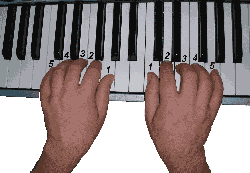
Here below you'll find some great beginner piano sheet music with harmonic intervals on the staff. I recommend them highly. They're so fun!
Beginner Pieces for the Grand Staff with Harmonic Intervals.
| Name of the Piece | Audio File | Video File | |
| Away in the Deep Forest | Download | Play | |
| Lightly Row | Download | Play |

At this point many students start to encounter difficulties in combining between the right hand and the left hand. The problem is that you have to play these pieces smoothly while keeping the independence and coordination of your fingers while gaining each times a faster finger speed. To learn to this you must check out the Hannon Finger Exercises Piano Course.
In this DVD, the exercises are demonstrated by an accomplished jazz instructor, James Wrubel, and broken down step-by-step in VIDEO format so that anyone with a dvd player or computer and 1 hour to spare can start using them right away.
I highly recommend you check out a sample of the first exercise on their website. Just that one sample exercise can dramatically improve your speed and precision. Click here to check out the Hannon Finger Exercises Piano Course Now!














